| Recent Featured Videos and Articles | Eastern “Orthodoxy” Refuted | How To Avoid Sin | The Antichrist Identified! | What Fake Christians Get Wrong About Ephesians | Why So Many Can't Believe | “Magicians” Prove A Spiritual World Exists | Amazing Evidence For God | News Links |
| Vatican II “Catholic” Church Exposed | Steps To Convert | Outside The Church There Is No Salvation | E-Exchanges | The Holy Rosary | Padre Pio | Traditional Catholic Issues And Groups | Help Save Souls: Donate |  |
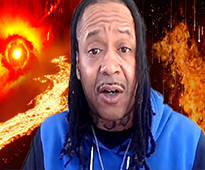
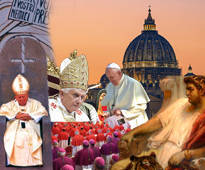
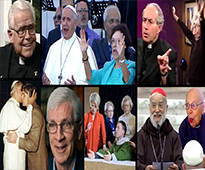
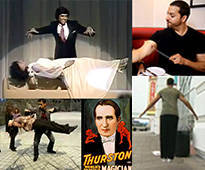
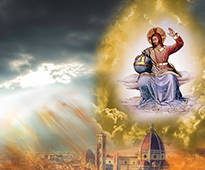

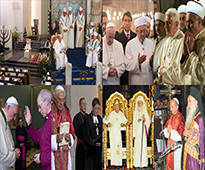
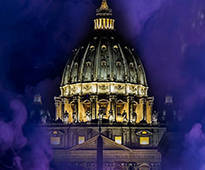

 " />
" />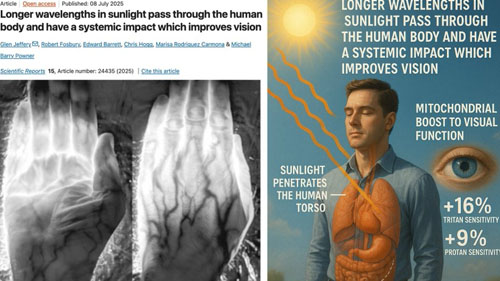 " />
" />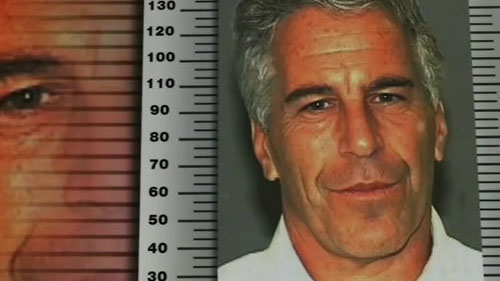 " />
" />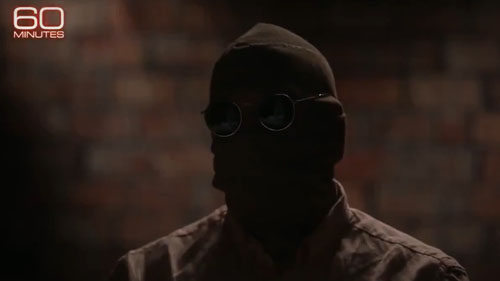 " />
" /> " />
" />




The Heresies of John Paul II, the most traveled man in history and perhaps the most heretical
Videos On John Paul II’s Heresies
“KING: The pope congratulated your children's bar mitzvahs?
”LEVINE: Not only congratulate us, he sent us a menorah.
”KING: He sent you a menorah?
”LEVINE: He gave it to us, actually, didn't send it. Actually gave us a menorah. I think it's from the 16th century in Prague. It's the most beautiful menorah. He sent a letter on the occasion of each of my son's bar mitzvahs. He also had the cardinal in charge of Catholic/Jewish relations send a letter that was read out in my Orthodox shul on the occasion of my son's recent bar mitzvah, and the rabbi read it as if it were from a rabbi.” [1]
Karol Wojtyla (John Paul II) claimed to be the pope from 1978-2005
THE HERESIES OF JOHN PAUL II
John Paul II taught universal salvation, that all men will be saved
The only difficulty in discussing the heresies of John Paul II is deciding where to begin. His heresies are so numerous that one is almost overwhelmed with the decision of where to start. A good place to begin is his consistent teaching of universal salvation. The idea that all men are saved is contrary to the clear words of the Gospel and numerous Catholic dogmas, especially the dogmas that Outside the Catholic Church there is no salvation and that all who die in original sin or mortal sin cannot be saved.
However, John Paul II held and taught that in the Incarnation, the Son of God united Himself with every man in an unbreakable union, which made it impossible, according to him, for anyone to go to Hell. John Paul II explicitly taught that this union between Christ and each man lasts forever.
Notice the word “forever” in all three of these quotations. Yes, in three different encyclicals, John Paul II bluntly asserts that every man is united with Christ forever. This means that all men are saved. Hell is eternal separation from God, but no one is ever separated from God according to John Paul II. Everyone is united with God forever. This is universal salvation.
There are many other quotations we could bring forward to prove that John Paul II taught that all men are saved. For example, in 1985, John Paul II explained how the redemptive Blood of Christ is not merely available to all (which is true), but that it actually reaches all and saves all.
In contrast with this, the dogmatic teaching of the Catholic Church affirms that the Blood of Christ does not reach all or save all.
Only those who are freed from original sin by Baptism, and united to Him through the sacraments and the true faith, receive the benefit of Christ’s death.
With a doctrine such as this, who wouldn’t be loved by the world? John Paul II appealed to, and was loved by the masses, because he accepted everyone’s religion and taught that everyone is united with Christ no matter what they believed or did. This religious indifferentism characterized his anti-pontificate.
John Paul II taught that the Holy Ghost is responsible for non-Christian Religions
Besides his incredible doctrine of universal salvation and universal justification, there are many other heresies from John Paul II for us to examine. Of particular note is his teaching on the Third Person of the Blessed Trinity, the Holy Ghost. What John Paul II taught about the Holy Ghost was so blasphemous and heretical that it was arguably his worst heresy.
John Paul II says that the firm belief of the followers of non-Christian religions proceeds from the Holy Spirit, the Spirit of Truth. Since we know from Sacred Scripture and Catholic teaching that Satan is the author of all non-Christian religions, what is being stated here by John Paul II is that the Holy Spirit, the Spirit of Truth, is actually the spirit of lies: Satan. This is an unbelievable blasphemy against God.
Scripture and Tradition teach us that non-Christian religions belong to the devil, and the “gods” they worship are actually demons.
Since John Paul II taught that belief in these religions is a result of the Spirit of Truth, that is why he repeatedly praised, promoted and even prayed with the members and leaders of non-Christian religions.
John Paul II with African Animists (witch doctors), more on this later
Here John Paul II says that respect for non-Christian religions is dictated by respect for the action of the Spirit in man. This clearly means that the Spirit is responsible for these non-Christian religions, which again means that the Holy Spirit is to be understood as the spirit of lies: Satan.
John Paul II states that other religions stimulate us to discover the presence and the working of the Spirit. This means that non-Christian religions are a work of the Spirit – the Holy Spirit – which again equates the Spirit of Truth with the spirit of lies: Satan.
John Paul II taught and practiced complete Religious Indifferentism
John Paul II’s religious indifferentism was perhaps the most common characteristic of his volumes of writings and speeches. He constantly praised and esteemed non-Christian religions, thereby denying the Most Holy Trinity and the necessity of believing in the one true Catholic religion, while making a mockery of the deaths of the martyrs.
The word “feat” means an extraordinary act. So John Paul II says that the false religions Buddhism and Confucianism are splendid fruits in religion, and that it was an extraordinary act that the Koreans transmitted these religions of Satan to others!
John Paul II at the Buddhist Temple
In his second Asian journey in 1984, John Paul II visited the Buddhist Temple. Before reaching the Temple, he expressed how anxious he was to meet “His Holiness, the supreme Buddhist Patriarch in the Temple.” A few days before going to the Buddhist Temple, John Paul II also said:
John Paul II then went into the temple of idolatry and bowed to the Buddhist Patriarch who stood in front of a gigantic statue of Buddha. This constitutes an act of apostasy.
John Paul II in the Buddhist Temple
John Paul II received the mark of the adorers of Shiva
On Feb. 2, 1986, John Paul II received on his forehead the Tilac or Tika, the red powdery paste of the Hindus, the sign of recognition of the adorers of Shiva. This is total idolatry and apostasy.
John Paul II venerated the Hindu Gandhi
In March of 1986, John Paul II went to New Delhi, India, the place where the Hindu Mahatma Gandhi was incinerated. Mahatma Gandhi was a pagan and an idolater who worshipped false gods.
John Paul II took off his shoes before Gandhi’s monument and stated: "Today as a pilgrim of peace, I have come here to pay homage to Mahatma Gandhi, hero of humanity."[20]
An idolater and a pagan was a “hero of humanity,” according to John Paul II.
As we see here, John Paul II also threw flowers on Gandhi’s tomb to honor and commemorate this pagan. St. Thomas Aquinas explains that just as there are heretical statements, there are heretical and apostate actions.
St. Thomas even gives us an example:
One can manifest his apostasy by words or by deeds. By what he did, in addition to what he said, John Paul II manifested the equivalent of worshipping at the tomb of Mahomet. He venerated a Hindu.
John Paul II's Apostasy in Assisi
On Oct. 27, 1986, John Paul II invited the major leaders of all the false religions of the world to come to Assisi, Italy for a World Day of Prayer for Peace. John Paul II prayed with over 100 different religious leaders of various false religions, thereby repudiating the teaching of Scripture and the 2000-year teaching of the Catholic Church which outlaws such prayer with false religions.
The entire day of prayer with the pagans, infidels and heretics was John Paul II's idea. During this meeting the Dalai Lama placed a Buddhist statue on the tabernacle in the church of St. Francis.
The Statue of Buddha on the Tabernacle at Assisi
Among the various false religious leaders at Assisi there were rabbis, Islamic muftis, Buddhist monks, Shintoists, assorted Protestant ministers, Animists, Jainists and others.
During the meeting, a member of each false religion came forward and offered a prayer for peace – blasphemous prayers, for instance, as the Hindu prayer said: “Peace be on all gods.” (The Animist leader prayed to the “Great Thumb.”) But their gods are devils, as we saw above, so peace was being prayed for all the devils (who created these false religions) at the Vatican-sponsored World Day of Prayer for Peace! The Vatican II religion wants you to be in communion with devils.
In 1928, Pope Pius XI authoritatively condemned this inter-religious activity and denounced it as apostasy from the true Faith.
Here again we find a clear expression of John Paul II’s apostasy. He says that God makes Himself present through the spiritual riches of peoples, of which their religions are the main expression. This means that God makes Himself present to peoples through non-Christian religions, which means that non-Christian religions are true and inspired by God.
John Paul II’s other ecumenical meetings
John Paul II continued with his wild program of apostasy, totally condemned by the teaching of the Catholic Church, after the Assisi event. John Paul II sponsored pagan prayer meetings at Kyoto (1987), Rome (1988), Warsaw (1989), Bari (1990), and Malta (1991), as well as numerous meetings after 1991.
John Paul II being “blessed” in a pagan ritual by an Indian Shaman in 1987[31]
There was the outrageous pagan prayer meeting in 1999, which was officially dubbed “The Pan-Christian Encounter,” at which a large gathering of false religions came to the Vatican at the request of John Paul II (more on this in a bit).
John Paul II prayed with African Animists
On August 8, 1985, John Paul II prayed with African Animists (witch doctors). John Paul II recalled the meeting:
It has been stated that while in Togo he actually paid homage to the sacred snakes.
In Cotonou, Africa on Feb. 4, 1993, chanting girls treated John Paul II to a “trance inducing” voodoo dance.
John Paul II has also taken part in many events, both in Rome and abroad, where a native pagan ritual is included. These rituals spring from cultures which are entirely demonic and satanic in every aspect of their organized religious practices, yet were included in many of John Paul II’s liturgical events.
Above: John Paul II’s “Mass” in 2002 in Mexico City, which incorporated the customs of the demonic Aztec culture. Indians danced before the altar wearing headdresses and breastplates and some left their midriffs exposed. As they performed, the snake-like hiss of rattles and the beating of tom-toms could be heard. John Paul II himself was actually the recipient of a pagan “purification” ritual which a woman performed.
The “Pan-Christian” Encounter: John Paul II’s Apostate Prayer Meeting in 1999
Pictured above is John Paul II, surrounded by an assorted group of pagans and idolaters, including one half-dressed, on Nov. 7, 1999 – at another one of his countless apostate interreligious prayer meetings. Notice the masked pagan just behind John Paul II on our left and his right. John Paul II praised them and esteemed them for their false religions of the Devil. This is nothing other than a general occultism.
This meeting was called the “Pan-Christian Encounter.” This is interesting considering that, in his encyclical Mortalium Animos, Pope Pius XI described the heretics who promoted religious indifferentism as “These Pan-Christians…”[33] Some of the things that occurred during John Paul II's October 1999 pan-religious meeting included: an American Indian pivoting in the center of St. Peter's Square at sunset “blessing the four corners of the Earth,” and Muslims who had spread out newspaper at the Vatican kneeling toward Mecca and praying.[34]
John Paul II’s Assisi II Prayer-Meeting with False Religions– another apostate prayer meeting in 2002
Most recently there was the spectacle of Assisi 2002. On Jan. 24, 2002, John Paul II held another pagan prayer meeting in the city of Assisi, Italy, a repeat of the abominable event that took place in 1986. However, this Assisi meeting may have been even worse.
During the Assisi II prayer meeting, the representative of every false religion involved was allowed to come to the pulpit and give a sermon on world peace. In the presence of John Paul II, a voodoo high priest came to the pulpit outside the Basilica of St. Francis and gave the voodoo prescription for world peace. (Voodooists, remember, are witchdoctors.) Therefore, by John Paul II’s arrangement, from a pulpit outside the historic Basilica of St. Francis, a witchdoctor was allowed to give a sermon and provide his prescription for world peace! This would involve slitting the throats of goats, chickens, doves and pigeons, and draining their blood from their arteries.
The Hindu woman told the entire crowd that everyone is God, as John Paul II looked on. After the Jew, the Buddhist, the Muslim, the Hindu, the witchdoctor and the rest were finished preaching, the various false religious leaders broke up into different rooms to pray to their false gods.
John Paul II had it arranged in advance that each false religion was given a separate room in which to worship the Devil.
All of the crucifixes were removed, and the crucifixes which could not be removed were covered. John Paul II made sure that the infidels, witchdoctors and pagans saw no sign of Jesus Christ.
The Muslims needed a room which faced East toward Mecca, and it was given to them. The Zoroastrians needed a room with a window, so that the smoke from the wood chips that they burned to the Devil could exit through it – and it was given to them. The Jews wanted a room that had never before been blessed; in other words, a room that had never been blessed in the name of Jesus Christ, and John Paul II provided them with one. Greater abomination, blasphemy and rejection of the true God almost cannot be imagined.
As we see from this regional council, in the early Church going into the pagan temple (which John Paul II did in Thailand) to worship idols was considered the height of wickedness. It represented such apostasy from the Faith that those who even repented of it were only admitted to confession (not Communion). If going into the pagan temple was considered such severe apostasy, what would they say about a purported leader of the Church who turns the Catholic churches themselves into pagan temples so that the pagans can worship false gods in them? They would undoubtedly consider it the height of apostasy.
Pope Pius XI, Ad Salutem (# 27), April 20, 1930: “…all the compulsion and folly, all the outrages and lust, introduced into man’s life by the demons through the worship of false gods.”[37]
John Paul II’s Apostasy with the Muslims
On May 14, 1999, John Paul II bowed to and kissed the Koran. The Koran is the Muslims’ holy book which blasphemes the Most Holy Trinity and denies the Divinity of Jesus Christ. To revere the holy book of a false religion has always been considered an act of apostasy – a complete rejection of the true religion. This act alone made John Paul II an apostate; for it is equivalent to worshipping at the tomb of Mahomet, which St. Thomas points out would make one an apostate.
During his visit to Germany on Nov. 17, 1980, John Paul II encouraged the Muslims to “Live your faith also in a foreign land...”[38]
In Feb. of 2000, John Paul II met with the Islamic “Grand Sheikh” Mohammed. John Paul II committed another act of apostasy in his speech to the Muslims.
John Paul II thanked those who develop Islamic culture! He thanked the infidels for developing a culture which denies Jesus Christ, the Trinity and the Catholic Faith on a massive scale, and keeps hundreds of millions in the darkness of the Devil. Of all the evil things in the world that one can think of, Islamic culture probably ranks in the top five of the most evil.
The middle ages were a constant spiritual and physical battle between the Christian West and the Islamic hordes. This statement of John Paul II constitutes a rejection of Jesus Christ and formal apostasy. No Catholic would ever make such a statement even one time.
John Paul II asked St. John the Baptist to protect Islam!
On March 21st, 2000, John Paul II asked St. John the Baptist to protect Islam (the religion of the Muslims), which denies Christ and the Trinity, and keeps hundreds of millions of souls in the darkness of the Devil.
This is to ask St. John to protect the denial of Christ and the damnation of souls.
On April 12, 2000, John Paul II met with the King of Morocco, a descendant of the false prophet of Islam, Muhammad. John Paul II asked him, “You are a descendant of the Prophet, aren’t you?”[42]
John Paul II’s Apostasy in the Mosque
On May 6, 2001, John Paul II culminated his years-worth of apostasy with the Muslims by traveling to and attending the "Great Umayyad Mosque" of Damascus. While in the mosque, John Paul II actually took off his shoes out of reverence for the temple of infidelity.
In the upper left, we see John Paul II entering "Great Umayyad Mosque" of Damascus on May 6, 2001. In the other photos, we see him in the mosque with the infidel Grand Mufti, Sheikh Ahmad Kfutaro. While in the mosque, John Paul II was also seated in a chair identical to that of the infidel Grand Mufti. Here is the statement that John Paul II made to the Muslims that day:
It’s very interesting to note that the “Omayyad” caliphate (a line of Muslim rulers), after which that particular mosque that John Paul II attended is named, was a line of Muslim rulers that was hugely involved in waging war on Catholic Spain in the 700-year war of Muslims vs. Christians in Spain.
The fact that the mosque he attended was named after a group that is so representative of anti-Christianity just adds insult to his apostasy. The blood of all the faithful Catholics who died fighting the Omayyads for the very survival of Christian Spain cries out against him.
John Paul II teaches that Muslims and Catholics Have the Same God
Earlier in the book, we covered Vatican II’s heretical teaching that Catholics and Muslims together worship the one true God. John Paul II repeated this heresy of Vatican II countless times.
This is blasphemy and apostasy. Muslims reject the Most Holy Trinity. They don’t worship the one true God. By asserting that Muslims and Catholics believe in the same God over and over again, John Paul II denied the Most Holy Trinity over and over again. Furthermore, one is struck by the specificity with which John Paul II (just like Vatican II) denied Jesus Christ in many of these quotations. For example:
Here we find John Paul II’s catechism teaching that the Muslims’ god (who is not Jesus Christ) will judge mankind on the last day. This means Jesus Christ will not judge mankind on the last day, but rather the god whom the Muslims worship will. This is a denial of the Second Coming of Jesus Christ to judge the living and the dead.
Pope St. Damasus I, Council of Rome, 382, Can. 15: “If anyone does not say that He Jesus Christ… will come to judge the living and the dead, he is a heretic.”[51]
John Paul II’s Apostasy with the Jews
On April 13, 1986, John Paul II traveled to the Jewish Synagogue in Rome.
John Paul II arriving at the Jewish Synagogue, April 13, 1986
Here we see John Paul II arriving at the Jewish Synagogue in Rome in 1986, where he took part in a Jewish worship service. In taking part in a Jewish worship service, John Paul II committed a public act of apostasy, and showed again that he was a manifest heretic and an apostate. Notice that John Paul II and the rabbi greeted each other as if they were long-lost best friends. During his stay at the synagogue, John Paul II bowed his head as the Jews prayed for the coming of their "Messiah."
John Paul II in the Synagogue of the Jews
This incredible act of apostasy by John Paul II was directly connected to his heretical teaching that the Old Covenant is still in force. The Catholic Church teaches that with the coming of Jesus Christ and the promulgation of the Gospel, the Old Covenant (that is, the agreement made between God and the Jews through the mediation of Moses) ceased, and was replaced with the New Covenant of Our Lord Jesus Christ. It’s true that some aspects of the Old Covenant are still valid because they are included in the New and Eternal Covenant of Jesus Christ, such as the Ten Commandments; but the Old Covenant itself (the agreement between God and the Jewish people) ceased with the coming of the Messiah. Therefore, to say that the Old Covenant is still valid is to assert that Judaism is a true religion and that Jesus Christ is not really the Messiah. It is also to deny defined Catholic dogma, such as the teaching of the Council of Florence, which defined ex cathedra that the Old Law is now dead and that those who attempt to practice it (namely, the Jews) cannot be saved.
Pope Benedict XIV reiterated this dogma in his encyclical Ex Quo Primum.
John Paul II repeatedly repudiated this dogma, in word and deed – a dogma taught by the Catholic Church for 2000 years, defined infallibly by the Council of Florence, and affirmed clearly by Popes Benedict XIV and Pius XII.
We see here that Pope Benedict XIV condemns the heresy taught by John Paul II, that the Old Covenant has never been revoked by God! John Paul II repeated the same bold heresy in a 1997 speech:
It’s important to note that the Vatican II sect’s “Archbishop” of Strasbourg, France, Joseph Dore, recalled with glee John Paul II’s aforementioned heresy on the Old Covenant, which John Paul II uttered in the speech in Mainz, West Germany and elsewhere. Notice that “Archbishop” Dore admits that Vatican II changed the traditional teaching of the Church on the cessation of the Old Covenant.
In fact, John Paul II teaches the same heresy on the Old Covenant in his new catechism, again directly opposed to Catholic dogma.
Here is a brief summary of John Paul II’s 2004 message in commemoration of the synagogue:
1) He joins the Jewish community in commemorating the 100th anniversary of the synagogue – apostasy.
2) He says this Jewish community can boast of being the most ancient synagogue in Western Europe and of having spread Judaism – total apostasy.
3) He formally expresses his desire that he could have been with them, in the synagogue, commemorating it – apostasy.
4) He praises the importance and the vigor of the religion that is celebrated every Saturday in Rome – apostasy. The word “vigor” means “Active physical strength or energy; flourishing physical condition, vitality; mental or moral strength, force or energy.” Thus, he is telling them again that their Covenant with God is valid, flourishing, in force.
5) On behalf of the entire Christian Community in Rome, as supposed “successor of St. Peter,” he formally thanks the Lord for the 100 years of the synagogue! – apostasy!
6) He greets the Jews as beloved brothers of the faith of Abraham, which is another total denial of Christ, as scripture teaches that only those who are of Christ have the faith of Abraham.
7) He states that the Jews “continue to be the first-born people of the Covenant,” quoting the Good Friday prayer of the New Mass, which prays that the Jews “continue” in faithfulness to God’s Covenant. John Paul II is blatantly teaching, once again, that the Jews’ Covenant with God is still valid – bold heresy.
8) He commemorates those who died as Jews and says that their memory should be blessed – heresy.
9) On behalf of “the Church,” he repents for any anti-Judaism – apostasy. This would include the Church’s anti-Jewish dogma that Jews who die without conversion to Catholicism go to Hell, and therefore need to be converted and saved. He is just mocking Our Lord and the Church.
This speech ranks right near the top of John Paul II’s blasphemies and heresies. John Paul II was totally in favor of the denial of Christ; he clearly taught that the Old Covenant is still valid; he totally denied Jesus Christ and the Catholic Faith; he put his apostasy right in the world’s face. Those who hold that this manifest heretic and apostate was a Catholic, while aware of these facts, and refuse to denounce him as a heretic, are truly enemies of God.
John Paul II’s best-friend, Jerzy Kluger, was a Jew.
John Paul II embracing his best-friend, the Jew, Jerzy Kluger
Of course, John Paul II never tried to convert Kluger. Kluger explicitly stated that John Paul II never game him the slightest indication that he wanted to convert him. Rather, Kluger credits his life-long relationship with John Paul II with making him “feel more Jewish.” As a youth, John Paul II played soccer goalie on the Jewish squad with Kluger; they played against the Catholics. In a letter to Kluger on March 30, 1989, regarding the destruction of a synagogue during World War II, John Paul II wrote the following:
This is blunt apostasy. By venerating the synagogue, John Paul II is venerating the Jews’ denial that Jesus Christ is the Messiah.
But Jerzy Kluger was not the only Jew who was made to feel more Jewish by John Paul II. There is the Jewish maestro, Gilbert Levine.
Jewish Maestro Gilbert Levine with John Paul II[63]
Levine noted that, in their many-year relationship, John Paul II never gave him the slightest indication that he wanted to convert him. Levine also noted publicly that, after getting to know John Paul II, he returned to the practice of Judaism.
John Paul II asked Levine to conduct a concert in the Vatican to commemorate the Holocaust. Levine agreed, and with Antipope John Paul II in attendance the concert took place in the Vatican. All of the crucifixes were covered.
John Paul II seated next to the Jewish Rabbi for the Holocaust Concert (a Jewish Prayer Service) in the Vatican
The concert began with “Kol Nidre,” the prayer sung on the holiest day of the Jewish calendar. A few of the many Jews in attendance also lit candles during the ceremony, which quickly became a Jewish religious service in the Vatican. After the concert Levine remarked:
After the concert John Paul II called for Levine to receive the Vatican Knighthood. Levine became a Knight Commander of the Equestrian Order of St. Gregory the Great. John Paul II chose “Cardinal” Lustiger of Paris to bestow the honor. Lustiger himself, who was raised a Jew, stated in a 1981 interview: “I am a Jew. For me the two religions are one.”[65] The honor that John Paul II had bestowed on Levine is one of the very highest that can be received by laymen.
This proves that John Paul II officially encouraged the practice of Judaism; that he officially encouraged the denial of Christ; that he officially helped people practice the Old Covenant; and that he celebrated their observance of the Jewish religion with them. In light of these facts, anyone who says that John Paul II was not a non-Catholic apostate simply denies Jesus Christ – period. Here is an excerpt from the interview on CNN’s Larry King Live:
Notice that Gilbert Levine wanted to use the music of the former Jew, Mahler, for the concert, but John Paul II discouraged it by pointing out that Mahler was a Jew who converted to Catholicism!
John Paul II Praying at the Wailing Wall
On March 26, 2000, John Paul II prayed at the Western Wall in Jerusalem. The Western Wall is the stone remnant of the Jewish Temple in Jerusalem that was destroyed by the Romans in 70 A.D. The Jews pray at the Western Wall as the holiest site in Judaism.
John Paul II praying at the Wailing or Western Wall in Jerusalem
The destruction of the Temple in 70 A.D., leaving only the Western Wall, has always been understood by Catholics to signify God’s judgment on the Jews. The destruction of the Temple prevented Jews from being able to offer sacrifice, which meant that their religion had come to an end. The destruction of the Temple was God’s powerful sign to the Jews that the Messiah had come, that the Old Covenant had ceased, and that the Temple had been replaced by the Catholic Church.
So when a Jew prays at the Western Wall, or leaves a prayer there, it is a denial that Jesus is the Messiah; it is an affirmation that he holds that the Old Covenant is still in force; and it is a pitiful and sad attempt to ignore God’s very obvious sign that the Jews must abandon the destroyed Temple and enter the Catholic Church.
So when John Paul II himself prayed at the Western Wall in March of 2000, it was an attempt to validate Judaism. It was a denial that Jesus Christ is the Messiah, an indication that he holds that the Old Covenant is still in force, and a mockery of God’s clear sign that the Jews must abandon the destroyed Temple and enter the Catholic Church. One informed commentator pointed out that, when John Paul II prayed at the Western Wall, most of the nation of Israel was watching on television. This means that every Jew watching on television was given the impression by John Paul II that he doesn’t need to convert to Jesus Christ because Christ is not the Messiah.
The prayer that John Paul II left at the Western Wall asked forgiveness for sins against the Jewish people.
Other Apostasy with the Jews during the Reign of John Paul II
In late 2001, a Vatican Commission under John Paul II released a book entitled The Jewish People and the Holy Scriptures in the Christian Bible. The book argues that the Jews’ wait for the coming of the Messiah is still valid. There is more on this book in the section later on dealing with Benedict XVI.
On August 12, 2002, the American bishops in union with John Paul II issued a document on the Jews. Spearheaded by the notorious apostate William Keeler of Baltimore, and without a peep of objection from John Paul II, the document publicly declared: “… campaigns that target Jews for conversion to Christianity are no longer theologically acceptable in the Catholic Church.”[67]
All of this proves that John Paul II and his bishops were/are complete apostates from the Catholic Faith.
John Paul II’s incredible Heresies regarding Baptized Non-Catholics (i.e., heretics and schismatics)
We have already examined and exposed in detail John Paul II’s undeniable apostasy with paganism, Islam and Judaism. Besides the many statements and acts of heresy and apostasy that John Paul II committed with those false and non-Christian religions, there are also his incredible heresies regarding baptized non-Catholics and their heretical sects. For example:
John Paul II taught that schismatics don’t need to be converted
John Paul II in the Syrian “Orthodox” Cathedral of St. George with schismatic Patriarchs Zakka I and Ignatius IV in 2001[68]
John Paul II taught that Eastern Schismatics (the so-called Orthodox) don’t need to be converted to the Catholic Church. To provide a little background: The Eastern Schismatics (the so-called “Orthodox”) reject the dogma of the Papacy, which means that they reject the supreme authority of all the true popes in history. They reject the dogma of Papal Infallibility: the truth that a pope teaches infallibly when speaking from the Chair of Peter. They reject the dogma of the Immaculate Conception, they refuse to accept the last 13 Councils of the Roman Catholic Church, and they allow divorce and re-marriage.
In his outrageous Directory for the Application of the Principles and Norms of Ecumenism (#125), John Paul II encouraged interfaith worship with these Eastern Schismatics and stated: “… any suggestion of proselytism should be avoided.”[70]As we cover later, John Paul II approved the Directory on Ecumenism in Ut Unum Sint # 58 and elsewhere.
To proselytize is to convert someone. So John Paul II held that any effort to convert the Eastern Schismatics should be avoided. Here are the words of a real Catholic pope, Pope Benedict XIV, on the exact same topic.
One can easily see the difference between the two religions: the Catholic religion teaches that all of its teachings must be accepted and that non-Catholics need to be converted. The non-Catholic religion of John Paul II (the Vatican II religion) teaches that the Catholic faith is meaningless and that non-Catholics should not be converted.
Walter Kasper, a high-ranking member of the Vatican II Church, understands this quite well. Kasper was made a “cardinal” and the head of the Vatican’s Council for Promoting Christian Unity by John Paul II. Benedict XVI confirmed Kasper in his position as head of the Vatican’s Council for Promoting Christian Unity. Expressing the view of both John Paul II and Benedict XVI, Kasper stated:
“… today we no longer understand ecumenism in the sense of a return, by which the others would ‘be converted’ and return to being ‘Catholics’. This was expressly abandoned by Vatican II.”[73]
Catholics who were tortured and martyred because they refused to become Eastern Schismatics
In his 1945 encyclical Orientales Omnes Ecclesias, Pope Pius XII gives a few examples of Catholics in history who were tortured and killed because they wouldn’t abandon fidelity to the Papacy and become Eastern “Orthodox” schismatics. St. Josaphat is one famous example, but there are many others. St. Josaphat converted many Eastern Schismatics back to the Catholic Faith until he was murdered by them for his efforts to bring people back into union with the Papacy.
There were many others who were fined, flogged, tortured, drowned and killed because they wouldn’t become Eastern Schismatics.
By its heretical teaching that the “Orthodox” schismatics are not outside the Church and don’t need conversion for salvation, the Vatican II sect utterly mocks the saints and martyrs who suffered horribly not to become schismatics.
The Vatican’s Balamand Statement with the Eastern Schismatics, approved by John Paul II, rejects converting these non-Catholics as “outdated ecclesiology”
On June 24, 1993, the Vatican signed the Balamand Statement with the Eastern Schismatics (the so-called “Orthodox Church”). In this Balamand Statement (quoted below), which was approved by John Paul II, any attempt to convert the Eastern Schismatics is rejected as “the outdated ecclesiology of return to the Catholic Church.” Here are some passages from the amazingly heretical Balamand Statement:
This is incredibly bold heresy! This document, approved by the Vatican II antipopes, is definitely one of the worst heresies of the Vatican II sect. It bluntly mentions, and then totally rejects, the traditional dogma of the Catholic Church that the schismatics must be converted to the Catholic Faith for unity and salvation.
John Paul II called the Balamand Statement a “new step” that “should help all the local Orthodox Churches and all the local Catholic Churches, both Latin and Oriental, which live together in a single region, to continue their commitment to the dialogue of charity and to begin or to pursue relations of cooperation in the area of their pastoral activity.”[78]
Please notice especially #’s 14-15, which state that “in the search for re-establishing unity there is no question of conversion of people from one Church to the other in order to ensure their salvation…” Please notice #22, which states that the Catholic Church “has no desire for expansion at the expense of the Orthodox Church” and #30, which rejects the “outdated ecclesiology of return to the Catholic Church.” Notice how all of this bluntly rejects the Catholic dogma that non-Catholics must return to the Catholic Church for salvation and Christian unity.
So it is a fact that John Paul II and his false sect reject word-for-word the dogma of the Catholic faith: Christian unity is only achieved by conversion to Catholicism. We see this rejection of Catholic dogma again in the next quote.
More of John Paul II’s incredible heresies with the Eastern “Orthodox” Schismatics
It is therefore a fact that John Paul II teaches that the faith of Rome is not to be held by non-Catholics; therefore, he cannot be looked upon as holding the true Catholic Faith.
Those who assert, in the face of these facts, that John Paul II is to be looked upon as holding the true Catholic faith (in other words, that he was a true Catholic pope) are denying this teaching of the Catholic Church.
In his encyclical on Sts. Cyril and Methodius (#27), John Paul II again indicated that Eastern Schismatics should not be converted to the Catholic Church. He stated that unity with the schismatics “is neither absorption nor fusion,”[82]which means not by conversion. As we saw above, The Balamand Statement with the Orthodox actually quoted this very phrase from John Paul II’s encyclical on Sts. Cyril and Methodius to prove that Catholics should not convert the Orthodox.
John Paul II has confirmed his heresy in countless meeting with the schismatics. On Feb. 24, 2000, John Paul II met with the non-Catholic, schismatic Bishop of Alexandria, "Pope" Shenouda III.
John Paul II meeting with the schismatic Bishop of Alexandria, who calls himself “Pope” Shenouda III
In his message to the schismatic bishop, John Paul II called him "Your Holiness" and said:
In other words, John Paul II said: “God bless the schismatic Church!” This is a rejection of the Catholic Faith. Scripture specifically tells us that we cannot say “God speed” (in other words, “God bless”) to heretics.
By saying “God bless” to a false Church, one is asking God to multiply and propagate that false sect.
Photo of World News article dated Friday, November 17, 2000 - Pittsburgh Catholic regarding John Paul II’s $100,000 donation to the Romanian Orthodox Church
John Paul II and Teoctist (the schismatic Patriarch of Romania) jointly denouncing converting each other in a 2002 Joint Declaration
On October 12, 2002, John Paul II and the schismatic Patriarch of Romania jointly denounced trying to convert each other in a common declaration. They stated: “Our aim and our ardent desire is full communion, which is not absorption…”[84] This means not by conversion. John Paul II frequently used the phrase “neither absorption nor fusion” to indicate that unity with the schismatics is not by converting them. Remember, that phrase was used with this very meaning in the Balamand Statement (cited earlier) with the schismatic “Orthodox.”
Teoctist, the schismatic Patriarch of Romania, had already revealed in 1999 that John Paul II made a large donation to his non-Catholic Church.[85] Zenit News Service and others (see previous page) reported that John Paul II’s donation to the schismatic Patriarch was $100,000!
In his address on the same day as their Joint Declaration, John Paul II told the schismatic Patriarch Teoctist: “The goal is… to reach a unity which implies neither absorption nor fusion…”[88]
So, John Paul II has publicly ensured his listeners over and over again that Catholics should not try to convert non-Catholics and that the Catholic Faith is not necessary for attaining salvation.
In fact, in the same address to the schismatic Patriarch of Romania, John Paul II made this incredible statement:
So much for the Papacy! So much for the last 1000 years of dogmatic statements that the schismatics reject! So much for divorce and re-marriage! And so much for the Catholic Church, according to John Paul II. According to this apostate, all of this means nothing and in fact should not be believed because “the Church” desires nothing else than to keep these people in schism and outside her teachings.
Here we see John Paul II and the schismatic Patriarch Teoctist sitting on equal level chairs
This is another action by which John Paul II manifested that he accepted the “Orthodox” heresy that all bishops are equal. John Paul II held that it’s fine to deny the Primacy of the Bishop of Rome.
In the summer of 2003, John Paul II again repudiated the proselytism of the Eastern Schismatics.
This infallible definition of Vatican I declares that anyone who deviates from the dogma of the Papacy (that the Pope of Rome holds sovereign power in the Church of Christ), such as the “Orthodox” schismatics and the Protestants, cannot keep his faith and salvation. Yet, John Paul II tells us that the Orthodox schismatics and the Protestants not only can keep their faith and salvation while denying the Papacy, but should not believe in the Papacy. He was a complete heretic who rejected this dogma of Vatican I.
John Paul II Declaring a Communion and Unity of Faith with non-Catholic Sects
In his encyclical Ut Unum Sint, John Paul II declared that his “Church” is in communion with non-Catholic sects an incredible 16 times, and he declared that he has the same faith as non-Catholic sects 8 times.
When John Paul II asserts that he has the same faith and communion as non-Catholic sects, he is asserting that he is a non-Catholic.
John Paul II gave a relic to schismatic Karekin II, and he declared that his sect is the “Bride of Christ”
John Paul II also gave Karekin II, the head of the schismatic Church in Armenia, a relic of St. Gregory the Illuminator.
John Paul II gives a relic of St. Gregory the Illuminator to the head of the schismatic “Church” in Armenia
St. Gregory the Illuminator (c. 257-332 A.D.) was the “apostle of Armenia,” the one who propagated the true Christian Faith (the Catholic Faith) in Armenia:
By giving the relic of this great Christian apostle of Armenia to the schismatics, John Paul II was clearly indicating that he considered the schismatics as possessors of the true Christian Faith – the true Faith that St. Gregory the Illuminator held. Further, in the homily above, we can see that John Paul II called the schismatic Orthodox Church “the Bride of Christ,” a title reserved to the Catholic Church!
John Paul II’s Heresy with the Anglican Sect
Because Margaret Clitherow refused to accept the Anglican sect and its “Mass” – but rather invited Catholic priests into her home against the penal laws – she was martyred by being crushed to death under a large door loaded with heavy weights. This style of execution is so painful that it is called “severe and harsh punishment.” She suffered it all because she wouldn’t accept Anglicanism. The Vatican II sect, however, teaches that Anglicans are fellow “Christians” who don’t need conversion, and whose invalid “bishops” are actually true bishops of the Church of Christ. The Vatican II sect teaches that her martyrdom was pointless.
John Paul II goes to the Anglican Cathedral and takes part in the worship of the Anglican sect – formal heresy by deed
John Paul II speaking at the Anglican Cathedral of Canterbury in 1982[101]
John Paul II mocking the English Martyrs by his joint prayer with the Anglican "Archbishop" of Canterbury, 1982
John Paul II in common prayer with the schismatic and heretical “Archbishop” of Canterbury (an Anglican), who is just a layman posing as a bishop
On May 29, 1982, in the Anglican Cathedral John Paul II knelt in a "prayer of interfaith" with the "Archbishop" of Canterbury, Robert Runcie, thus mocking the martyrdoms of so many Catholic saints, who bravely shed their blood rather than accept the false Anglican sect or partake in false worship.
John Paul II Bestowed the Pectoral Cross on the head of the Anglican Sect, a Layman
In 2003, John Paul II bestowed the pectoral cross upon Rowan Williams, the Anglican “Archbishop” of Canterbury.
John Paul II kissing the ring of Rowan Williams, the head of the Anglican sect, on whom he also bestowed a pectoral cross, even though Williams is just a layman
For those who don’t know, the Anglican non-Catholic sect doesn’t even have valid priests or valid bishops. Pope Leo XIII infallibly declared that Anglican ordinations are invalid.
Anglican “priests” and “bishops” are, therefore, laymen, besides being non-Catholic heretics and schismatics. Yet, after the election of the new Anglican “Archbishop” of Canterbury (Rowan Williams), John Paul II dispatched the apostate Walter Kasper to give this non-Catholic layman a pectoral cross and a telegram of approval! This is so heretical that there are almost no words to describe it.
The pectoral cross is a traditional Catholic symbol of episcopal authority. By bestowing the pectoral cross upon the apostate Rowan Williams – who is also in favor of women priests and homosexuals being ordained – John Paul II not only flatly denied by his deed Pope Leo XIII’s infallible definition that Anglican orders are invalid, but he also made a complete mockery of the Catholic dogmas on the Papacy and the Church of Christ.
And what makes this action of John Paul II even more incredible is the fact that Williams himself has been banned from conducting “Communion” services in 350 Anglican parishes for his view in favor of women priests![105] But that didn’t stop John Paul II; he just pushed ahead with the apostasy.
John Paul II even indicated that the non-Catholic layman Williams is the legitimate bishop of the “See of Canterbury.”
As shown above, during a meeting with Rowan Williams, John Paul II also kissed his ring, which demonstrated again that John Paul II recognized this non-Catholic layman as a legitimate bishop in the Church of Christ. John Paul II mocked Jesus Christ, the Catholic Church and all the English martyrs who suffered horrible tortures for refusing to abandon Catholicism and become Anglican. With this action, John Paul II rejected the Catholic Church’s teaching on the Episcopacy, Ordination, Apostolic Succession and Church Unity.
John Paul II went to the Lutheran Temple
John Paul II in the Lutheran temple in 1983
In 1983, John Paul II visited a Lutheran temple for the 500th anniversary of Martin Luther's birth. This is another heretical action – partaking of the worship ceremonies of a non-Catholic religion and celebrating a heresiarch – which absolutely proves that John Paul II was not a Catholic.
John Paul II praised Luther, Calvin, Zwingli and Hus
John Paul II also praised the greatest enemies that the Catholic Church has ever known, including the Protestant revolutionaries Luther and Calvin. In Oct. 1983, John Paul II, speaking of Martin Luther, stated: “Our world even today experiences his great impact on history.”[107] And on June 14, 1984, John Paul II praised Calvin as one who was trying to “make the Church more faithful to the will of the Lord.”[108] To patronize, support and defend heretics is to be a heretic. To praise the worst heretics in Church history, such as Luther and Calvin, is beyond heresy.
John Paul II also praised the notorious heretics Zwingli and Hus. He even went so far as to say that John Hus, who was condemned as a heretic by the Council of Constance, was a man of “infallible personal integrity”![110]
John Paul II approved the Vatican-Lutheran Agreement on Justification
John Paul II taught that non-Catholics can receive Communion
John Paul II also taught that non-Catholics may lawfully receive Holy Communion. Canon 844.3 of his 1983 Code of Canon Law states that:
The idea that non-Catholics may lawfully receive Holy Communion or the other sacraments is contrary to the 2000 year teaching of the Catholic Church.
What’s particularly significant about this heresy of John Paul II (that it is lawful to give Holy Communion to non-Catholics) is the fact that it also appears in his new catechism, paragraph # 1401. This document was promulgated by the so-called supreme apostolic authority of John Paul II. In his constitution Fidei Depositum, John Paul II promulgated his new catechism using his “apostolic authority” to declare that it is a “sure norm for teaching the faith.”
John Paul II’s catechism is not a sure norm for teaching the faith. It’s a sure norm for teaching heresy. Therefore, since John Paul II has pretended to declare from the Chair of Peter that his catechism is a sure norm for teaching the faith when it is not, we know that he does not sit in the Chair of Peter. A pope cannot err when speaking from the Apostolic See, that is, with his apostolic authority from the Chair of Peter.
This heresy on non-Catholics being allowed to receive Holy Communion was also taught in Vatican II, as we covered already. John Paul II also commented on this teaching with approval in Ut Unum Sint:
John Paul II, Ut Unum Sint (# 58), May 25, 1995: “… By reason of the very close sacramental bonds between the Catholic Church and the Orthodox Church… the Catholic Church has often adopted and now adopts a milder policy, offering to all the means of salvation and an example of charity among Christians through participation in the sacraments and in other sacred functions and objects… There must never be a loss of appreciation for the ecclesiological implication of sharing in the sacraments, especially the Holy Eucharist.”[117]
He notes the “ecclesiological implication” of sharing in the sacraments with the “Orthodox.” His implication is that they are part of the same Church.
John Paul II taught that non-Catholic sects are a means of salvation
Following Vatican II, John Paul II also taught that non-Catholic sects are a means of salvation, which is heresy.
Pope Pius IV, profession of faith, Council of Trent, ex cathedra: “This true Catholic faith, outside of which no one can be saved… I now profess and truly hold…”[119]
John Paul II taught that non-Catholic sects have Saints and Martyrs
John Paul II repeatedly taught that non-Catholic sects have saints and martyrs.
This is undeniable, clear-cut manifest heresy. It is an article of divine and Catholic Faith that those who are not in the Catholic Church, even if they shed blood in the name of Christ, cannot be saved.
This solemnly defined dogma of the Council of Florence was repeated by Pope Pius XI:
It’s hard to imagine a more specific and explicit denial of this particular dogma than Ut Unum Sint #84 of John Paul II (quoted above).
Also, please notice that not only does the manifest heretic John Paul II declare in Ut Unum Sint #84 that “saints” come from non-Catholic Churches (clear heresy), but he goes beyond that and declares that such non-Catholic sects “gave them” their salvation: “the Churches and Ecclesial Communities which gave them entrance into the communion of salvation.”
All of this is repeated, public and formal heresy. And to think that some “traditionalists” have the audacity to assert that John Paul II never denied a dogma! What an outrage and a lie! This heresy alone, without even considering all the others, proves that he was not a Catholic. It proves that John Paul II directly rejected the solemnly defined dogma (from the Council of Florence above) that non-Catholics cannot be saved even if they shed their blood for Christ.
John Paul II approved of the practice of Altar Girls
John Paul II with Altar Girls
John Paul II also approved of the practice of altar girls, a practice that is rampant in Vatican II churches. The practice of altar girls was condemned as evil by Pope Benedict XIV, Pope St. Gelasius and Pope Innocent IV.
John Paul II also “canonized” people who fully embraced the heresies of Vatican II, the New Mass and religious indifferentism. This is impossible for a true pope to do, since canonizations by true popes are infallible. This again serves to prove that John Paul II was not a true pope.
John Paul II also condemned the Crusades. The Crusades were solemnly approved by four councils and more than 10 popes, including Pope Urban II, Pope Callistus II, Pope Alexander III, Pope Callistus III, Pope Clement V and others.
John Paul II awarded by Freemasons
John Paul II receiving the B’nai B'rith (Freemasonic Lodge of New York) on March 22, 1982
In December of 1996, the Grand Orient Lodge of Italian Freemasonry offered John Paul II its greatest honor, the Order of Galilee, as an expression of thanks for the efforts that he made in support of Freemasonic ideals. The representative of Italian Freemasonry noted that John Paul II merited the honor because he had promoted “the values of universal Freemasonry: fraternity, respect for the dignity of man, and the spirit of tolerance, central points of the life of true masons.”[136]
John Paul II apologized to Red China
On Oct. 24, 2001, John Paul II apologized to Red China. That’s correct: John Paul II apologized to the satanic Communist regime in China for the supposed wrongs of Catholics! He even praised the social justice of Red China.
Social justice in China includes a one-child-per-family policy, which is imposed by forced abortion and contraception. The Chinese Government slaughters millions of children every year, in addition to imprisoning, torturing and murdering Catholics.
John Paul II stated that the Catholic Church and China are two ancient institutions “not in opposition to one another.”[138] To praise the social justice of Communist China is beyond heresy; it’s satanic.
John Paul II promoted the theory of evolution
On Oct. 22, 1996, John Paul II declared that evolution is “more than a mere hypothesis.”[139] This indicated that he considered evolution to be true.
John Paul II said that Heaven, Hell and Purgatory are not actual places
In a series of speeches in the summer of 1999, reported in the official Vatican newspaper, John Paul II said that Heaven, Hell and Purgatory are not actual places.
At his general audience on July 21, 1999, John Paul II said that Heaven is not an actual place.[140]
On July 28, 1999, John Paul II said:
This speech of John Paul II in itself constitutes formal heresy. He says we don’t know whether human beings are damned. It’s a divinely revealed truth of the Gospel that human beings are involved in eternal damnation, as Jesus says repeatedly. For instance:
In a brief audience in Polish to fellow countrymen, John Paul II recalled the teaching of the heretic Hans Urs von Balthasar that, "There is a Hell, but it could be empty."[144]
At the Assisi meeting of Jan. 24, 2002, John Paul II issued “the Decalogue of Assisi.” The word Decalogue means “the ten commandments.”
So John Paul II was saying that people need to proclaim the new ten commandments that he issued at Assisi.
John Paul II changed the Rosary
John Paul II venerating a loaf of bread?!
John Paul II also changed the Rosary. In Oct. 2002, John Paul II added five new mysteries to the Rosary, called “the Mysteries of Light.” In the document which promulgated the mysteries of light, John Paul II stated:
When we contemplate the mysteries of Christ, we don’t perceive in Him the truth about man. John Paul II said this because he taught that man is God; and specifically, that the truth about man is that he is Jesus Christ.
John Paul II taught that man is Christ
In his first ever homily as “pope” in 1978, in the very speech which will forever mark the beginning of his pastoral ministry, Sunday, Oct. 22, 1978, John Paul II proclaimed to the world that MAN is the Christ, the Son of the Living God of Matthew 16:16! He even said that this is a “new truth” – a new truth which he was here to reveal. “Thou art the Christ, the Son of the Living God,” spoken by St. Peter about Our Lord Jesus Christ, are the words which describe the truth about man, according to John Paul II. This is extremely significant, for it proves that Our Lady’s words at La Salette have come true.
In fact, John Paul II preached that man is Christ in many ways. Sometimes it was very subtle and clever, at other times it was very obvious and bold. This is covered in detail at the end of this book, but here are just a few quotes:
The “Catholic community” in Tunisia has no other ambition than to witness to the dignity of man? By such a statement John Paul II was again indicating that the “Catholic” community in Tunisia has no desire to convert other non-Catholics, but only to witness to the dignity of man.
This means that in man one can find the whole of creation.
The Gospel is Jesus Christ (His Life and Teaching); it’s the religion of faith and morals He revealed to the world. To say that the Gospel, the Good News and Christianity are the “deep amazement at man” is to equate man with Jesus Christ; but this is exactly why John Paul II said it and what he was doing.
John Paul II was anathema. He preached a new Gospel, not of Jesus Christ, but of man in the place of Christ – the Gospel of Antichrist.
John Paul II carrying the “Broken Cross”
Paul VI, John Paul I, John Paul II and Benedict XVI have carried a cross that very few have understood – the sinister bent or broken cross on which the Body of Christ is displayed as a repulsive and distorted figure. This bent or broken cross was used by black magicians and sorcerers in the sixth century to represent the Biblical term “mark of the beast.” Satanists in the fifth and sixth centuries, as well as black magicians and sorcerers of the Middle Ages (476-1453), used such figurines to represent their hatred for Christianity. The fact that the broken cross was used for occult purposes can be seen in the Museum of Witchcraft in Bayonne, France.[164]
Concluding Points about John Paul II
So the question that everyone professing to be Catholic must ask himself is this: was John Paul II the head of the Catholic Church? Or was John Paul II part of a different religion? If John Paul II was part of a different religion – and who would dare deny this in light of the undeniable and overwhelming evidence we have just presented? – then he could not have been the head of the Catholic Church.
We have proven beyond doubt that John Paul II was a manifest heretic. Since he was a heretic, he could not have been a validly elected pope. He was a non-Catholic antipope. As quoted already, Pope Paul IV solemnly taught in his Feb. 15, 1559 Bull, Cum ex Apostolatus officio, that it is impossible for a heretic to be a validly elected pope.
Endnotes for Section 16:
[1] www.cnn.com, archives of Larry King Live show, April 4, 2005.
[2] Denzinger, The Sources of Catholic Dogma, B. Herder Book. Co., Thirtieth Edition, 1957, no. 464.
[3] The Papal Encyclicals, by Claudia Carlen, Raleigh: The Pierian Press, 1990, Vol. 5 (1958-1981), p. 255.
[4] The Encyclicals of John Paul II, Huntington, IN: Our Sunday Visitor Publishing Division, 1996, p. 497.
[5] The Encyclicals of John Paul II, p. 643.
[6] L' Osservatore Romano (The Vatican’s Newspaper), July 1, 1985, p. 3
[7] Denzinger 795.
[8] L’Osservatore Romano, June 23, 1980, p. 3.
[9] L’Osservatore Romano, Jan. 1, 1979, p. 8.
[10] The Papal Encyclicals, Vol. 5 (1958-1981), p. 249.
[11] The Encyclicals of John Paul II, p. 517.
[12] The Encyclicals of John Paul II, p. 542.
[13] The Papal Encyclicals, Vol. 1 (1740-1878), p. 280.
[14] L’Osservatore Romano, May 7, 1984, p. 3.
[15] The Papal Encyclicals, Vol. 1 (1740-1878), p. 260.
[16] L’Osservatore Romano, May 14, 1984, p. 7.
[17] L’Osservatore Romano, Jan. 18, 1995, p. 11.
[18] The Papal Encyclicals, Vol. 2 (1878-1903), p. 304.
[19] L’Osservatore Romano, April 16, 1997, p. 3.
[20] Quoted in Abbe Daniel Le Roux, Peter, Lovest Thou Me?, Angelus Press, 1988, p. 147.
[21] St. Thomas Aquinas, Summa Theologica, Pt. I-II, Q. 103, A. 4.
[22] St. Thomas Aquinas, Summa Thelogica, Pt. II-II, Q. 12, A. 1, Obj. 2.
[23] The Papal Encyclicals, Vol. 3 (1903-1939), p. 317.
[24] L’Osservatore Romano CD-Rom, Year 1986, Vatican City, Angelus Address of John Paul II, Oct. 12, 1986.
[25] The Encyclicals of John Paul II, p. 540.
[26] The Papal Encyclicals, Vol. 1 (1740-1878), p. 222.
[27] L’ Osservatore Romano, May 29, 2002, p. 4.
[28] The Papal Encyclicals, Vol. 1 (1740-1878), pp. 237-238.
[29] The Encyclicals of John Paul II, p. 502.
[30] Decrees of the Ecumenical Councils, Sheed & Ward and Georgetown University Press, 1990, Vol. 1, pp. 550-553; Denzinger 39-40.
[31] Our Sunday Visitor, April 17, 2005.
[32] L’Osservatore Romano, August 26, 1985, p. 9.
[33] The Papal Encyclicals, Vol. 3 (1903-1939), p. 316.
[34] Associated Press, "Religious Leaders denounce Extremism," Oct. 29, 1999.
[35] Decrees of the Ecumenical Councils, Vol. 1, p. 625.
[36] Quoted by Amleto Giovanni Cicognani, Canon Law, Philadelphia, PA: The Dolphin Press, 1935, p. 177.
[37] The Papal Encyclicals, Vol. 3 (1903-1939), p. 381.
[38] L’Osservatore Romano, Dec. 9, 1980, p. 5.
[39] L’Osservatore Romano, March 1, 2000, p. 5.
[40] Von Pastor, History of the Popes, II, 346; quoted by Warren H. Carroll, A History of Christendom, Vol. 3 (The Glory of Christendom), Front Royal, VA: Christendom Press, 1993, p. 571.
[41] L’ Osservatore Romano, March 29, 2000, p. 2.
[42] The Catholic World Report, “World Watch,” June, 2000, p. 16.
[43] L’Osservatore Romano CD-Rom, Year 2001, Speech of John Paul II from the mosque, May 6, 2001.
[44] Warren H. Carroll, A History of Christendom (The Building of Christendom), Vol. 2, p. 298.
[45] The Encyclicals of John Paul II, p. 474.
[46] L’Osservatore Romano, Oct. 23, 1989, p. 12.
[47] L’Osservatore Romano, Feb. 19, 1990, p. 12.
[48] L’Osservatore Romano, May 23, 2001, p. 11.
[49] L’Osservatore Romano, May 12, 1999, p. 11.
[50] The Catechism of the Catholic Church, by John Paul II, St. Paul Books & Media, 1994, p. 223.
[51] Denzinger 73.
[52] Denzinger 712.
[53] The Papal Encyclicals, Vol. 1 (1740-1878), p. 98.
[54] The Papal Encyclicals, Vol. 4 (1939-1958), p. 42.
[55] L’ Osservatore Romano, Dec. 9, 1980, p. 6.
[56] The Papal Encyclicals, Vol. 1 (1740-1878), p. 98.
[57] Documentation Catholique 94 (1997), 1003; quoted in The Bible, The Jews and the Death of Jesus, Bishops’ Committee for Ecumenical and Interreligious Affairs, United States Conference of Catholic Bishops, 2004, p. 31.
[58] Bulletin du prieure Marie-Reine [195 rue de Bale, 68100 Mulhouse]; also The Angelus, Feb-March 2004, p. 70.
[59] The Catechism of the Catholic Church, #121.
[60] The Sunday Sermons of the Great Fathers, Chicago: Regnery Press, 1959, Vol. 1, p. 92.
[61] Decrees of the Ecumenical Councils, Vol. 1, p. 78.
[62] Darcy O' Brien, The Hidden Pope, New York, NY: Daybreak Books, 1998, pp. 368-369.
[63] http://www.lehman.cuny.edu/lehman/enews/2005_09_26/feat_pac.html
[64] Gilbert Levine, Interview with CBS’s 60 Minutes.
[65] Romano Amerio, Iota Unum, Kansas City, MO: Angelus Press, 1998, p. 578.
[66] www.cnn.com, archives of Larry King Live show, April 4, 2005.
[67] Catholic Family News, Niagra Falls, NY, September, 2002, p. 3.
[68] L’ Osservatore Romano, 2001.
[69] L’ Osservatore Romano, May 29, 2002, p. 5.
[70] Directory for the Application of the Principles and Norms of Ecumenism, by the Pontifical Council for Promoting Christian Unity, Boston, MA: St. Paul Books & Media, pp. 78-79.
[71] The Papal Encyclicals, Vol. 1 (1740-1878), p. 57.
[72] The Papal Encyclicals, Vol. 1 (1740-1878), p. 58.
[73] Adista, Feb. 26, 2001.
[74] The Papal Encyclicals, Vol. 4 (1939-1958), p. 93.
[75] The Papal Encyclicals, Vol. 4 (1939-1958), p. 95.
[76] The Papal Encyclicals, Vol. 4 (1939-1958), p. 99.
[77] The Papal Encyclicals, Vol. 4 (1939-1958), p. 100.
[78] Information Service 84 (1993/III-IV) 145; http://www.cnewa.org/ecc-bodypg-us.aspx?eccpageID=82&IndexView=alpha#footnote45
[79] The Papal Encyclicals, Vol. 3 (1903-1939), p. 317.
[80] L’Osservatore Romano, Jan. 27, 1993, p. 2.
[81] The Papal Encyclicals, Vol. 2 (1878-1903), p. 399.
[82] The Encyclicals of John Paul II, p. 248.
[83] L' Osservatore Romano, March 1, 2000, p. 5.
[84] L’ Osservatore Romano, Oct. 16, 2002, p. 5.
[85] America Magazine, “A New Chapter in Catholic-Orthodox Relations,” July 3-10, 1999, Vol. 181, No. 1
[86] Zenit.org, November 2, 2000.
[87] Decrees of the Ecumenical Councils, Vol. 1, p. 234.
[88] L’ Osservatore Romano, Oct. 16, 2002, p. 4.
[89] The Papal Encyclicals, Vol. 1 (1740-1878), p. 297 and footnote 4.
[90] L’ Osservatore Romano, Oct. 16, 2002, p. 4.
[91] The Papal Encyclicals, Vol. 1 (1740-1878), p. 230.
[92] The Papal Encyclicals, Vol. 1 (1740-1878), p. 207.
[93] The Papal Encyclicals, Vol. 1 (1740-1878), p. 201.
[94] The Papal Encyclicals, Vol. 3 (1903-1939), p. 318.
[95] L’Osservatore Romano, July 2, 2003, p. V.
[96] Denzinger 1827.
[97] The Encyclicals of John Paul II, p. 953.
[98] Quoted in Sacerdotium, # 2, Instauratio Catholica, Madison Heights, WI, p. 64.
[99] L’Osservatore Romano, Nov. 15, 2000, p. 6/7 – Joint Communique of John Paul II and Catholicos Karekin II.
[100] Warren H. Carroll, A History of Christendom, Christendom Press, 1985, Vol. 1, p. 539.
[101] 30 Days Magazine, November, 1996.
[102] The Papal Encyclicals, Vol. 1 (1740-1878), p. 321.
[103] Denzinger 1966.
[104] L’Osservatore Romano, 10/8/03, p. 9.
[105] CWNews, Sept. 8, 2003.
[106] L’Osservatore Romano, Oct. 8, 2003, p. 9.
[107] L’Osservatore Romano, Nov. 14, 1983, p. 9.
[108] L’Osservatore Romano, July 9, 1985, p. 5.
[109] The Papal Encyclicals, Vol. 1 (1740-1878), p. 268.
[110] 30 Days Magazine, Issue No. 7-8, 1995, p. 19.
[111] L’Osservatore Romano, Jan. 28, 2004, p. 4.
[112] The Code of Canon Law (1983), A Text and Commentary, Commissioned by the Canon Law Society of America, Edited by James A. Coriden, Thomas J. Green, Donald E. Heintschel, Mahwah, NJ: Paulist Press, 1985, p. 609.
[113] The Papal Encyclicals, Vol. 1 (1740-1878), p. 364.
[114] The Catechism of the Catholic Church, p. 5.
[115] Denzinger 1833.
[116] Denzinger 1837.
[117] The Encyclicals of John Paul II, p. 950.
[118] The Catechism of the Catholic Church, p. 216.
[119] Denzinger 1000.
[120] The Encyclicals of John Paul II, p. 965.
[121] Denzinger 714.
[122] The Papal Encyclicals, Vol. 3 (1903-1939), p. 368.
[123] The Papal Encyclicals, Vol. 1 (1740-1878), p. 229.
[124] The Encyclicals of John Paul II, p. 965.
[125] L’ Osservatore Romano, Nov. 15, 2000, p. 5.
[126] The Encyclicals of John Paul II, p. 914.
[127] Salvifici Doloris, Apostolic Letter of John Paul II, Feb. 11, 1984, Pauline Books, p. 35.
[128] L’Osservatore Romano CD-Rom, Year 1993, Angelus Address of John Paul II, Sept. 9, 1993.
[129] L’Osservatore Romano CD-Rom, Year 1994, Tertio Millennio Adveniente of John Paul II, Nov. 10, 1994.
[130] L’Osservatore Romano CD-Rom, Year 1994, Tertio Millennio Adveniente of John Paul II, Nov. 10, 1994.
[131] The Encyclicals of John Paul II, p. 965.
[132] The Encyclicals of John Paul II, p. 965.
[133] L’ Osservatore Romano, May 19, 1999, p. 11.
[134] Denzinger 247.
[135] The Papal Encyclicals, Vol. 1 (1740-1878), p. 64.
[136] The Remnant, St. Paul, MN, April 30, 2000, p. 6.
[137] L’ Osservatore Romano, Oct. 31, 2001, p. 3.
[138] L’ Osservatore Romano, Oct. 31, 2001, p. 4.
[139] Statement to the Pontifical Academy of Sciences, Oct. 22, 1996, Original French Version.
[140] National Catholic Register, Mt. Morris, IL, August 1-7, 1999, p. 4.
[141] L' Osservatore Romano, August 4, 1999, p. 7.
[142] L' Osservatore Romano, August 4, 1999, p. 7.
[143] L' Osservatore Romano, August 4, 1999, p. 7.
[144] National Catholic Register, August 8-14, 1999.
[145] National Catholic Register, August 15-21, 1999, p. 5.
[146] Decrees of the Ecumenical Councils, Vol. 2, p. 774.
[147] L’ Osservatore Romano, June 19, 2002, p. 9.
[148] L’ Osservatore Romano, Oct. 23, 2002, p. 5.
[149] L’Osservatore Romano, Nov. 2, 1978, p. 1.
[150] L’Osservatore Romano, Feb. 27, 1984, p. 1.
[151] L’Osservatore Romano, Jan. 8, 1992, p. 9.
[152] L’Osservatore Romano, Jan. 22, 1990, p. 6.
[153] L’Osservatore Romano, Sept. 2, 1985, p. 3.
[154] L’Osservatore Romano, Jan. 1, 1979, p. 1.
[155] L’ Osservatore Romano, Jan. 2, 2002, p. 1.
[156] L’Osservatore Romano, Jan. 6, 1986, p. 1.
[157] L’Osservatore Romano, April 2, 1991, p. 1.
[158] L’Osservatore Romano, Jan. 30, 2002, p. 6/7.
[159] L’Osservatore Romano, June 16, 2004, p. 8.
[160] L’Osservatore Romano, Aug. 29, 1988, p. 10.
[161] L’Osservatore Romano, Sept. 19, 2001, p. 10.
[162] The Papal Encyclicals, Vol. 5 (1958-1981), pp. 251-252.
[163] The Papal Encyclicals, Vol. 3 (1903-1939), p. 6.
[164] Piers Compton, The Broken Cross, p. 72.
[165] St. Francis De Sales, The Catholic Controversy, Rockford, IL: Tan Books, 1989, p. 45.
Sign up for our free e-mail list to see future vaticancatholic.com videos and articles.
Recent Content
^